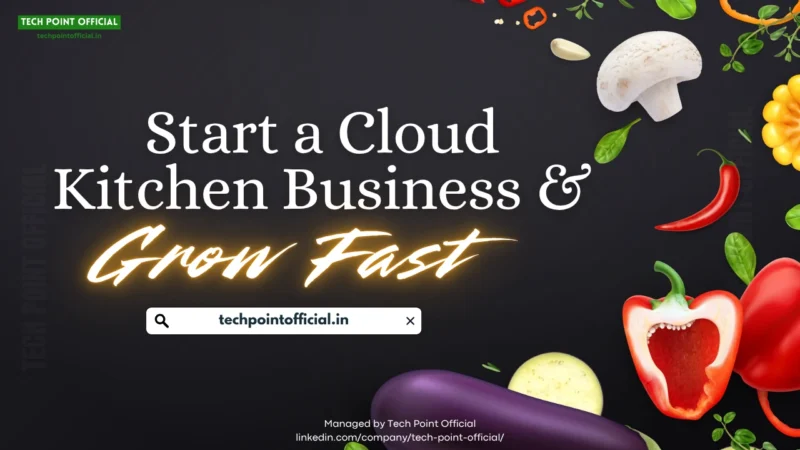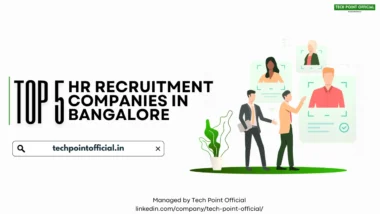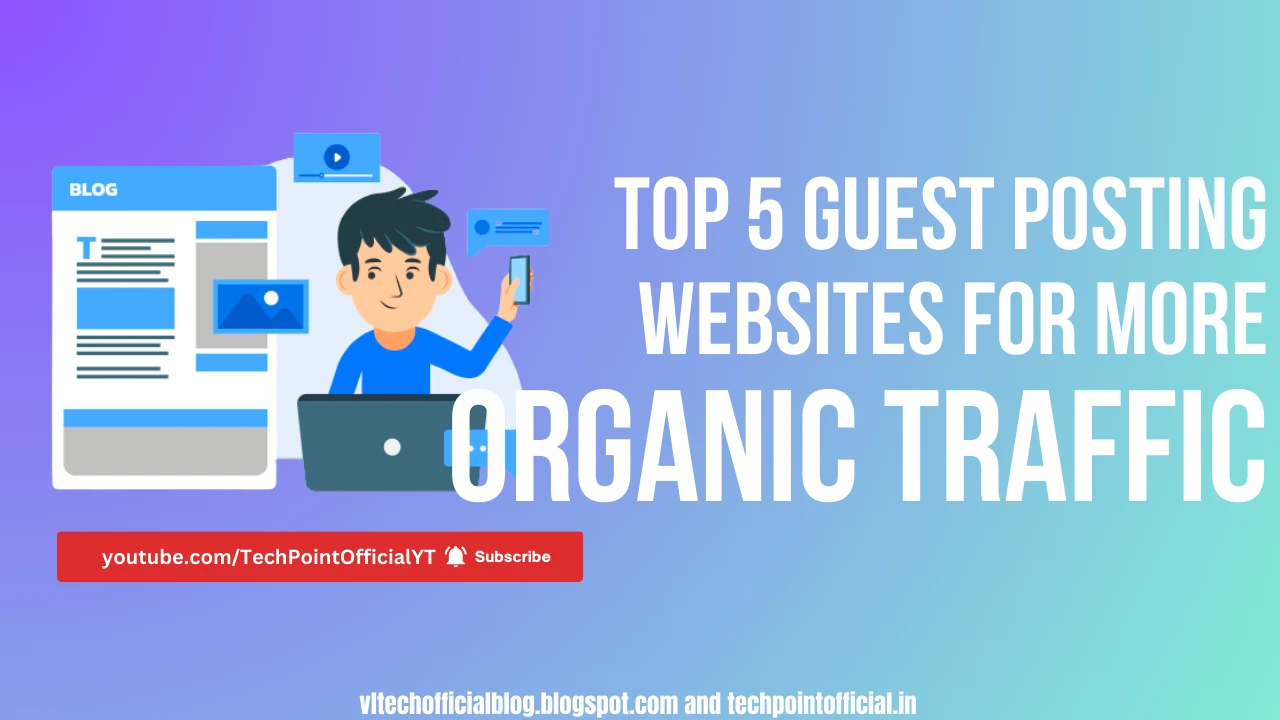Table of Contents Hide
- What is a Cloud Kitchen Business?
- Why Cloud Kitchens Are Thriving in India
- Step-by-Step Guide to Starting Your Cloud Kitchen Business
- Step 1: Market Research and Business Planning
- Step 2: Choose Your Business Model
- Step 3: Legal Requirements and Licensing
- Step 4: Location and Kitchen Setup
- Step 5: Technology Integration
- Step 6: Menu Development and Pricing Strategy
- Step 7: Partner with Delivery Platforms
- Step 8: Staffing and Training
- Step 9: Marketing and Customer Acquisition
- Step 10: Financial Management and Scaling
- Common Challenges and Solutions
- Common Challenges and Solutions
- Technology Trends Shaping Cloud Kitchens in 2025
- Success Stories and Case Studies
- Future Outlook and Opportunities
- Financial Planning and Investment Tips
- FAQs About Cloud Kitchen Business
- Conclusion: Your Journey to Cloud Kitchen Success
- If you found this guide helpful,
The cloud kitchen business model has revolutionized India’s food industry, especially after 2020 when delivery-only restaurants became the backbone of food entrepreneurship. If you’re considering starting a cloud kitchen business in India, you’re entering a market projected to reach ₹2,000 crores by 2025.
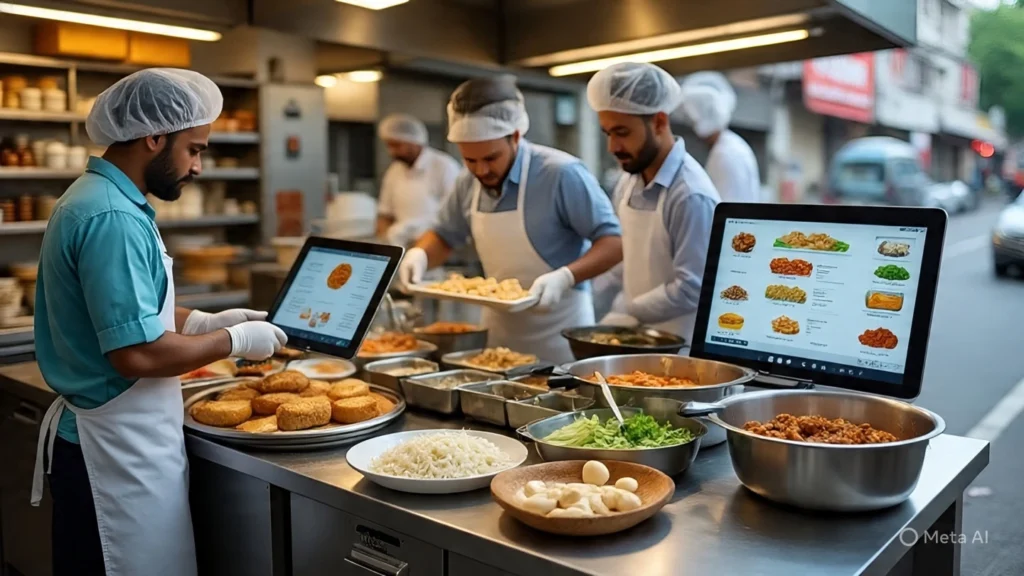
What is a Cloud Kitchen Business?
A cloud kitchen, also known as a ghost kitchen or virtual restaurant, operates without a traditional dining area. These delivery-only establishments focus solely on preparing food for online orders through platforms like Zomato, Swiggy, and direct customer apps.
The cloud kitchen business model eliminates costs associated with:
- Prime real estate locations
- Extensive interior design
- Large serving staff
- Dining furniture and fixtures
Instead, you invest in kitchen equipment, delivery infrastructure, and digital marketing to reach customers directly through their smartphones.
Why Cloud Kitchens Are Thriving in India
Market Growth and Opportunity
India’s online food delivery market has experienced unprecedented growth, with over 150 million active users across major platforms. The cloud kitchen business benefits from several market advantages:
Consumer Behavior Changes:
- Increased smartphone penetration (over 750 million users)
- Growing comfort with cashless payments
- Preference for convenience dining
- Expansion beyond metro cities to Tier-2 and Tier-3 towns
Economic Advantages:
- 40-60% lower setup costs compared to traditional restaurants
- Higher profit margins (15-25% vs 8-12% for dine-in restaurants)
- Faster break-even period (8-12 months)
- Scalability through multiple virtual brands
Step-by-Step Guide to Starting Your Cloud Kitchen Business
Step 1: Market Research and Business Planning
Before launching your cloud kitchen business, conduct thorough research:
Analyze Your Target Market:
- Study local food preferences and demographics
- Research competitors in your delivery area
- Identify gaps in cuisine offerings
- Determine optimal pricing strategies
Create a Detailed Business Plan:
- Define your unique selling proposition
- Calculate startup costs and operational expenses
- Project revenue streams and break-even timelines
- Plan marketing and customer acquisition strategies
Step 2: Choose Your Business Model
Single Brand Focus: Concentrate on one cuisine type (North Indian, South Indian, Chinese, etc.) to build strong brand identity and operational efficiency.
Multi-Brand Approach: Operate multiple virtual restaurants from one kitchen, targeting different customer segments with varied cuisines and price points.
Franchise Model: Partner with established cloud kitchen franchises that provide proven systems, recipes, and brand recognition.
Step 3: Legal Requirements and Licensing
Starting a cloud kitchen business in India requires several mandatory licenses and registrations:
Essential Licenses:
License Type | Issuing Authority | Validity Ads | Approximate Cost |
FSSAI License | Food Safety and Standards Authority | 1-5 years | ₹2,000-₹10,000 |
GST Registration | GST Department | Permanent | Free |
Shop & Establishment License | Local Municipal Corporation | 1 year | ₹500-₹5,000 |
Fire Safety Certificate | Fire Department | 1 year | ₹1,000-₹3,000 |
Trade License | Municipal Corporation | 1 year | ₹1,000-₹5,000 |
Additional Registrations:
- Business registration (Partnership/LLP/Private Limited)
- Professional Tax registration
- EPF and ESI registration (if employing staff)
- Pollution Control Board clearance

Step 4: Location and Kitchen Setup
Choosing the Right Location:
Your cloud kitchen business location should prioritize:
- Proximity to high-density residential areas
- Good connectivity for delivery partners
- Reasonable rent (₹15-₹30 per sq ft in metro cities)
- Adequate parking for delivery vehicles
- Reliable electricity and water supply
Kitchen Design and Equipment:
Essential Equipment List:
Equipment Category | Items | Estimated Cost Range |
Cooking Equipment | Gas stoves, tandoor, fryer, grills | ₹1,50,000-₹3,00,000 |
Refrigeration | Deep freezers, chillers, display counters | ₹1,00,000-₹2,00,000 |
Preparation | Food processors, mixers, cutting tables | ₹50,000-₹1,00,000 |
Storage | Racks, containers, ingredient bins | ₹30,000-₹60,000 |
Packaging | Sealing machines, containers, bags | ₹25,000-₹50,000 |
Kitchen Layout Optimization:
- Separate areas for vegetarian and non-vegetarian preparation
- Efficient workflow from preparation to packaging
- Adequate ventilation and exhaust systems
- Hand-washing stations and sanitization areas
- Storage space for dry and wet ingredients
Step 5: Technology Integration
Point of Sale (POS) Systems: Invest in cloud-based POS systems that integrate with delivery platforms:
- Order management across multiple platforms
- Real-time inventory tracking
- Sales analytics and reporting
- Customer relationship management
Kitchen Display Systems: Digital screens showing incoming orders help streamline operations and reduce preparation time.
Inventory Management Software: Track ingredient usage, predict demand, and automate supplier orders to minimize waste and stockouts.
Step 6: Menu Development and Pricing Strategy
Creating Your Menu:
Focus on dishes that:
- Travel well during delivery
- Have consistent quality and taste
- Use common ingredients to reduce inventory complexity
- Offer good profit margins
Pricing Strategy Considerations:
- Factor in ingredient costs, labor, packaging, and delivery commissions
- Research competitor pricing in your delivery radius
- Test different price points to optimize order volume and profitability
- Consider combo meals and value deals to increase average order value
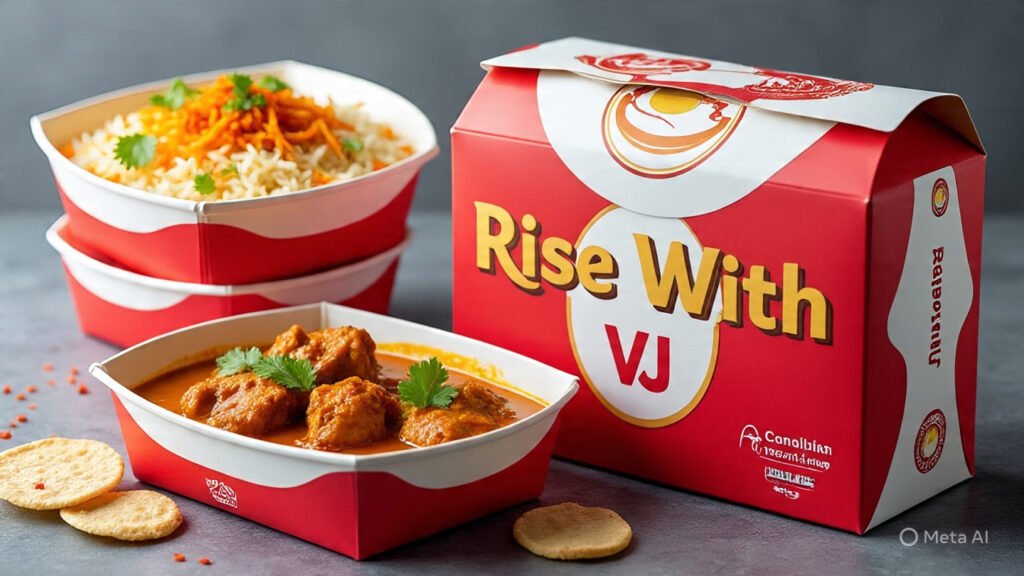
Step 7: Partner with Delivery Platforms
Major Platforms in India:
- Zomato: Market leader with extensive reach
- Swiggy: Strong presence in metro and Tier-2 cities
- Uber Eats/Other platforms: Additional revenue streams
Platform Partnership Considerations:
Factor | Zomato | Swiggy | Others |
Commission Rate | 18-25% | 18-25% | 15-30% |
Customer Base | High | High | Variable |
Marketing Support | Good | Good | Limited |
Technology Integration | Advanced | Advanced | Basic |
Negotiation Tips:
- Start with lower commission rates during initial months
- Negotiate marketing support and featured listings
- Understand payment cycles and terms
- Clarify customer data sharing policies
Step 8: Staffing and Training
Essential Staff Roles:
- Head Chef/Kitchen Manager
- Cooking staff (2-4 members depending on capacity)
- Food preparation assistants
- Packaging and quality control staff
- Delivery coordinator (if managing own delivery)
Training Focus Areas:
- Food safety and hygiene protocols
- Recipe standardization and portion control
- Order management systems
- Customer service skills
- Emergency procedures
Step 9: Marketing and Customer Acquisition
Digital Marketing Strategy:
Social Media Marketing:
- Instagram and Facebook for visual content
- Regular posting of food photography and behind-the-scenes content
- Influencer collaborations and food blogger partnerships
- Customer testimonials and reviews
Search Engine Optimization:
- Optimize your listings on delivery platforms
- Create a website for direct orders
- Local SEO for area-specific searches
- Google My Business optimization
Customer Retention Strategies:
- Loyalty programs and repeat customer discounts
- WhatsApp marketing for direct customer communication
- Email marketing for special offers
- Referral programs to encourage word-of-mouth marketing

Step 10: Financial Management and Scaling
Initial Investment Breakdown:
Expense Category | Cost Range (₹) |
Kitchen Setup & Equipment | 3,00,000-6,00,000 |
Licensing & Registration | 10,000-25,000 |
Initial Inventory | 50,000-1,00,000 |
Marketing & Branding | 25,000-75,000 |
Working Capital | 1,00,000-2,00,000 |
Total Investment | 4,85,000-10,00,000 |
Revenue Projections:
- Average order value: ₹250-₹400
- Daily orders (Month 1-3): 30-50 orders
- Daily orders (Month 6-12): 100-200 orders
- Monthly revenue potential: ₹7,50,000-₹24,00,000
Scaling Strategies:
- Add new virtual brands targeting different cuisines
- Expand to additional locations in the same city
- Develop franchise opportunities
- Create private label products for retail
Common Challenges and Solutions
Challenge 1: High Competition
Solution: Focus on unique selling propositions like authentic regional cuisines, healthy options, or innovative fusion dishes.
Challenge 2: Quality Consistency
Solution: Implement strict standardization protocols, regular training, and quality checks before dispatch.
Challenge 3: Delivery Logistics
Solution: Partner with multiple delivery platforms and consider hybrid models with both platform and direct delivery.
Challenge 4: Customer Acquisition Cost
Solution: Focus on organic marketing, customer referrals, and building a strong local community presence.
Step 10: Financial Management and Scaling
Initial Investment Breakdown:
Expense Category | Cost Range (₹) |
Kitchen Setup & Equipment | 3,00,000-6,00,000 |
Licensing & Registration | 10,000-25,000 |
Initial Inventory | 50,000-1,00,000 |
Marketing & Branding | 25,000-75,000 |
Working Capital | 1,00,000-2,00,000 |
Total Investment | 4,85,000-10,00,000 |
Revenue Projections:
- Average order value: ₹250-₹400
- Daily orders (Month 1-3): 30-50 orders
- Daily orders (Month 6-12): 100-200 orders
- Monthly revenue potential: ₹7,50,000-₹24,00,000
Scaling Strategies:
- Add new virtual brands targeting different cuisines
- Expand to additional locations in the same city
- Develop franchise opportunities
- Create private label products for retail
Common Challenges and Solutions
Challenge 1: High Competition
Solution: Focus on unique selling propositions like authentic regional cuisines, healthy options, or innovative fusion dishes.
Challenge 2: Quality Consistency
Solution: Implement strict standardization protocols, regular training, and quality checks before dispatch.
Challenge 3: Delivery Logistics
Solution: Partner with multiple delivery platforms and consider hybrid models with both platform and direct delivery.
Challenge 4: Customer Acquisition Cost
Solution: Focus on organic marketing, customer referrals, and building a strong local community presence.
Technology Trends Shaping Cloud Kitchens in 2025
Artificial Intelligence Integration:
- Predictive analytics for demand forecasting
- AI-powered inventory management
- Automated pricing optimization
- Chatbot customer service
Automation and Robotics:
- Automated food preparation equipment
- Robotic packaging systems
- Smart inventory tracking with IoT sensors
- Drone and robot delivery trials
Sustainability Initiatives:
- Eco-friendly packaging solutions
- Solar power integration
- Food waste reduction technologies
- Local sourcing and farm-to-kitchen partnerships
Success Stories and Case Studies
Case Study 1: Regional Success A cloud kitchen in Pune started with ₹5 lakh investment focusing on authentic Maharashtrian cuisine. Within 18 months, they achieved:
- Daily orders: 180-220
- Monthly revenue: ₹18 lakh
- Expansion to 3 virtual brands
- 35% repeat customer rate
Case Study 2: Multi-City Expansion A North Indian cloud kitchen brand scaled from Bangalore to 8 cities:
- Initial investment: ₹12 lakh
- Current monthly revenue: ₹45 lakh across locations
- 15 virtual restaurant brands
- Franchise model implementation
IMAGE SPACE 8 Image Prompt: Success metrics dashboard showing growth charts, revenue figures, and expansion maps for cloud kitchen businesses
Future Outlook and Opportunities
The cloud kitchen business in India is expected to grow at a CAGR of 15% through 2027. Key opportunities include:
Emerging Markets:
- Tier-2 and Tier-3 city expansion
- Regional cuisine specialization
- Health-conscious menu development
- Corporate catering services
Technology Integration:
- Virtual reality dining experiences
- Blockchain for supply chain transparency
- Advanced data analytics for personalization
- Integration with smart home devices
Financial Planning and Investment Tips
Funding Options
Self-Funding: Ideal for smaller operations with ₹5-8 lakh investment Angel Investors: Seek investors interested in food-tech startups Bank Loans: MUDRA loans and business loans for equipment financing Government Schemes: Startup India benefits and food processing subsidies
Cost Optimization Strategies
Ingredient Management:
- Negotiate bulk purchase agreements
- Implement just-in-time inventory
- Reduce waste through portion control
- Seasonal menu adjustments
Operational Efficiency:
- Cross-train staff for multiple roles
- Optimize delivery routes and timing
- Implement energy-efficient equipment
- Negotiate better commission rates with platforms

FAQs About Cloud Kitchen Business
The minimum investment for a cloud kitchen business ranges from ₹4-5 lakh for a basic setup to ₹10-12 lakh for a well-equipped operation. This includes kitchen equipment, licensing, initial inventory, and working capital for the first 3-6 months.
Obtaining all necessary licenses for your cloud kitchen business typically takes 2-4 weeks if you apply simultaneously. FSSAI license takes the longest (15-30 days), while GST registration can be completed within 2-3 days online.
Yes, operating multiple virtual brands from one cloud kitchen is a popular strategy to maximize revenue. You can offer different cuisines, price points, and target various customer segments while sharing the same kitchen infrastructure and staff.
Monthly expenses for a cloud kitchen business include rent (₹20,000-₹50,000), staff salaries (₹40,000-₹80,000), ingredients (30-35% of revenue), platform commissions (18-25% of orders), utilities (₹8,000-₹15,000), and marketing (₹10,000-₹25,000).
Maintain food quality in your cloud kitchen business through HACCP protocols, regular staff training, temperature monitoring, proper storage systems, quality checks before dispatch, customer feedback analysis, and compliance with FSSAI guidelines.
Conclusion: Your Journey to Cloud Kitchen Success
Starting a cloud kitchen business in India offers tremendous opportunities in the rapidly growing food delivery market. With proper planning, strategic location selection, technology integration, and focus on quality, your cloud kitchen can achieve profitability within 8-12 months.
The key to success lies in understanding your local market, maintaining consistent quality, leveraging technology effectively, and building strong relationships with delivery partners and customers.
Ready to start your cloud kitchen journey? Share your thoughts in the comments below about which cuisine you’d focus on, and don’t forget to bookmark this guide for reference during your setup process. Follow our blog for more entrepreneurship insights and practical business guides.
If you found this guide helpful,
share it with aspiring food entrepreneurs and join our community of cloud kitchen owners. Subscribe to our newsletter for the latest industry updates, success stories, and practical tips to grow your food business.
Join Whats App ChannelSubscribe Youtube Channel